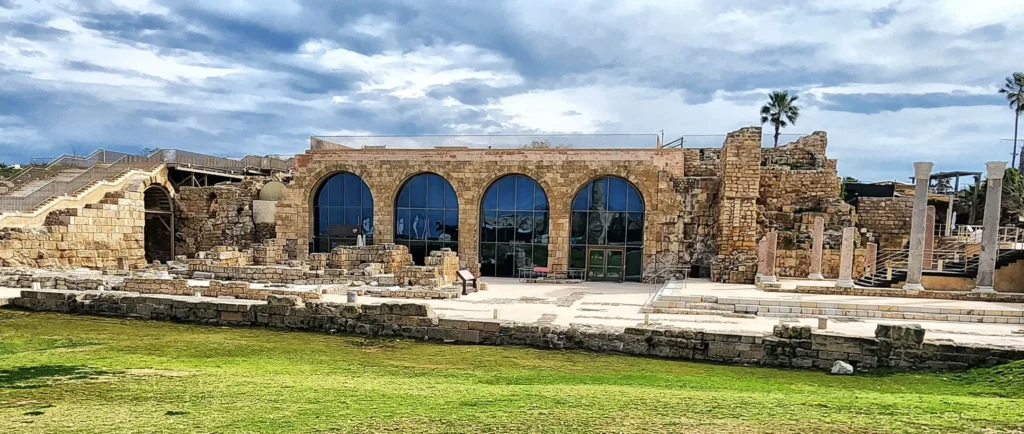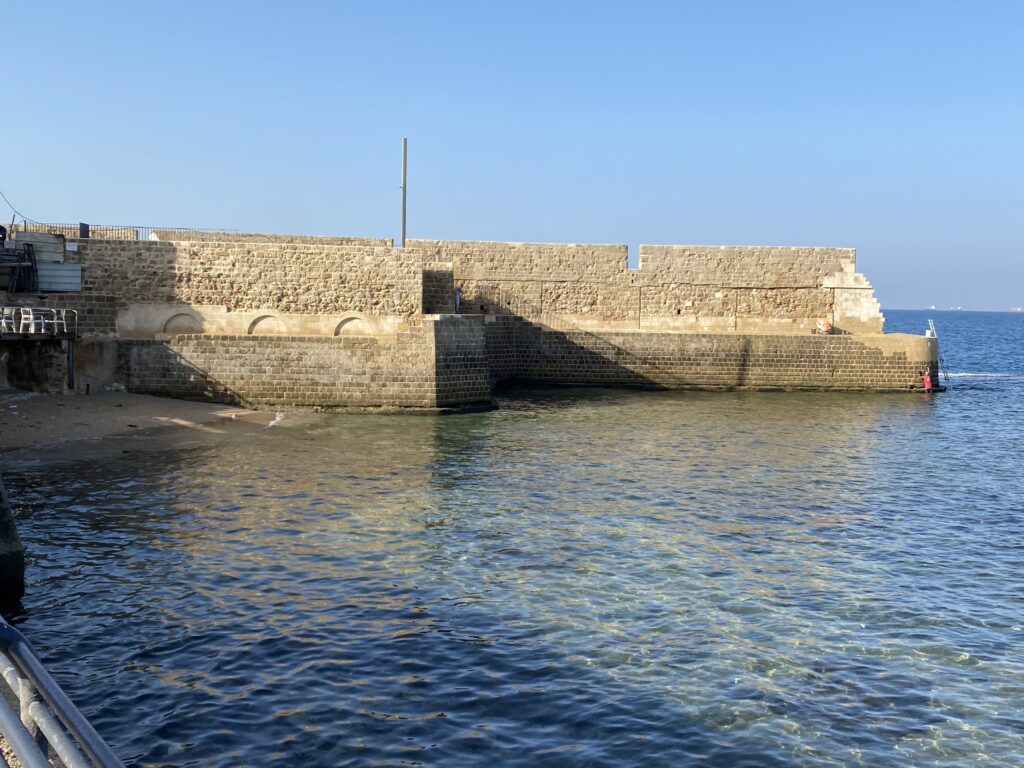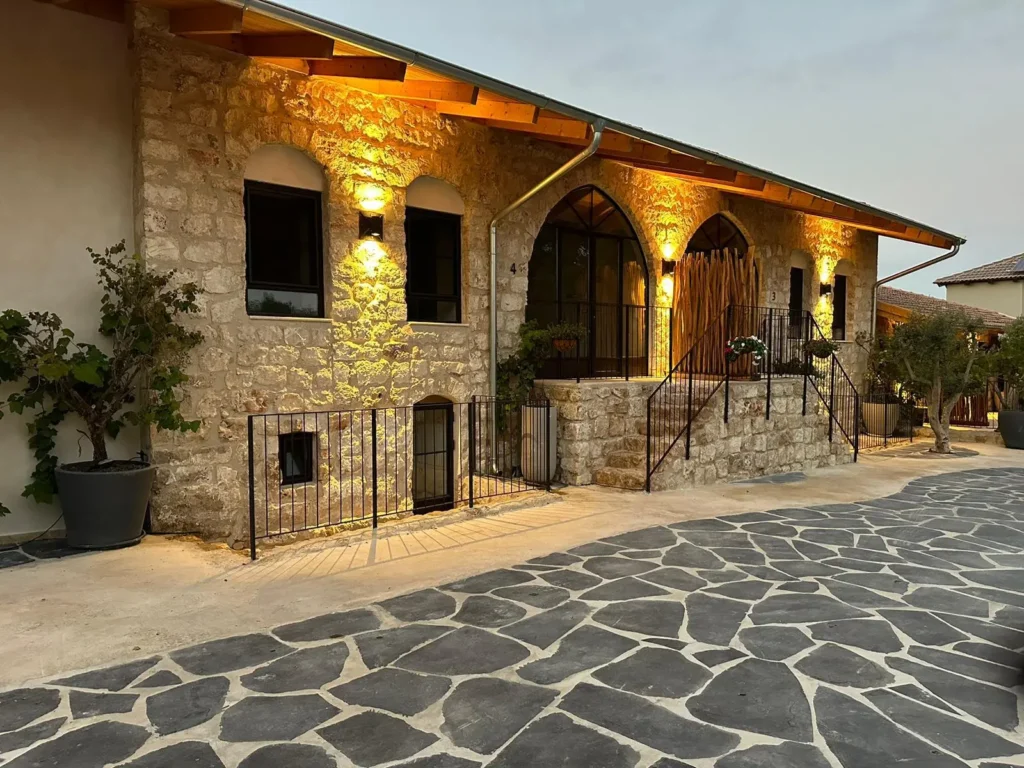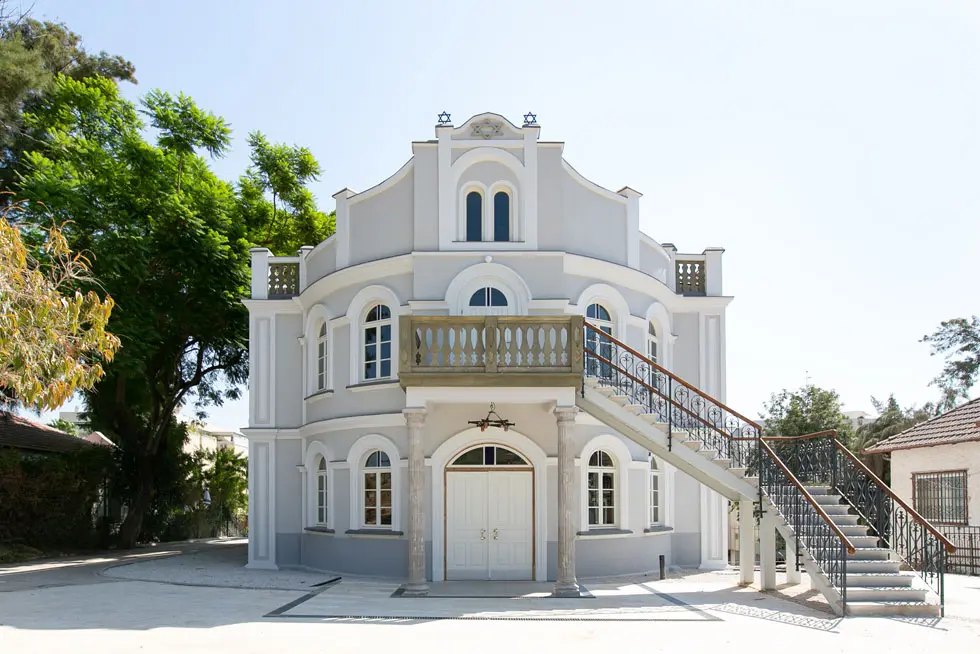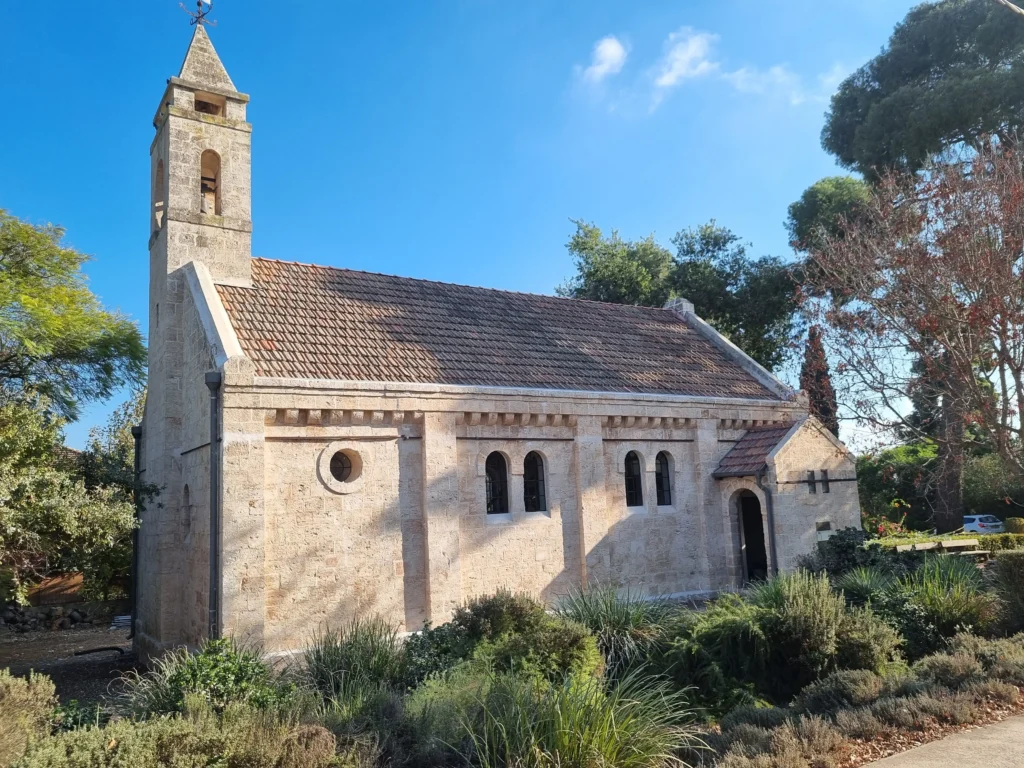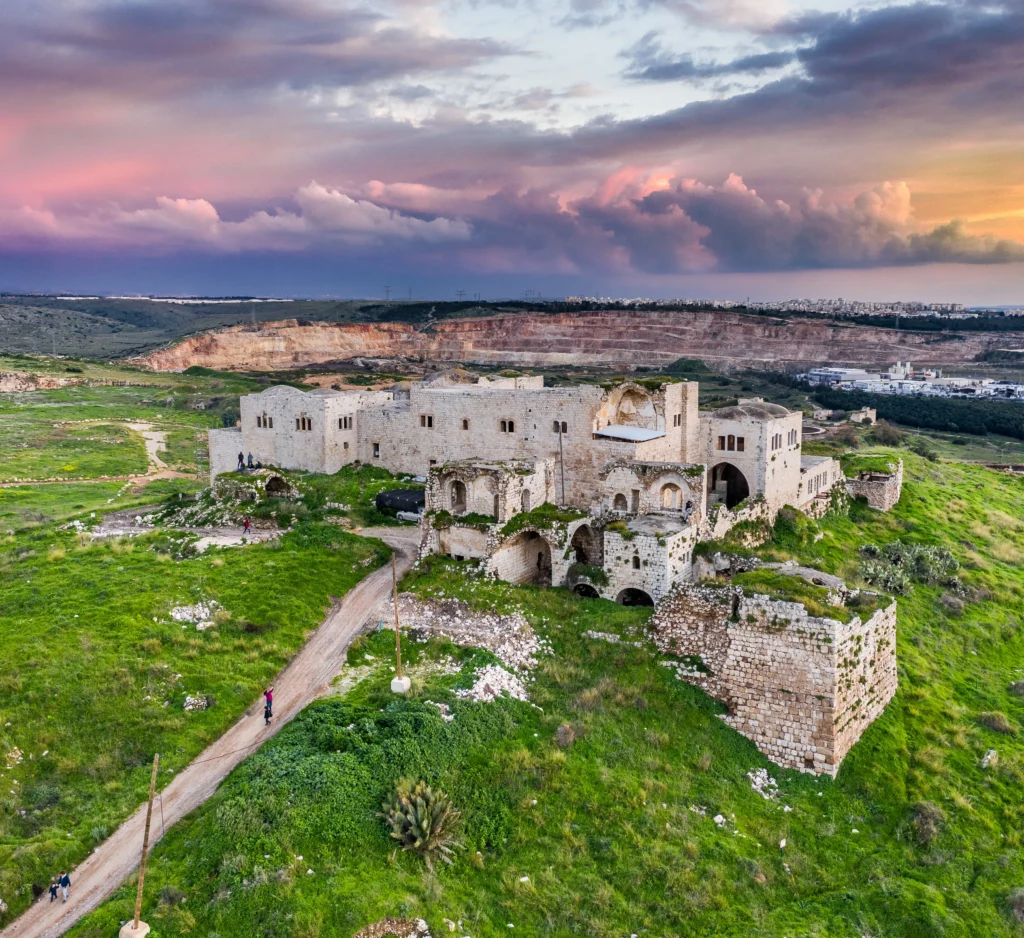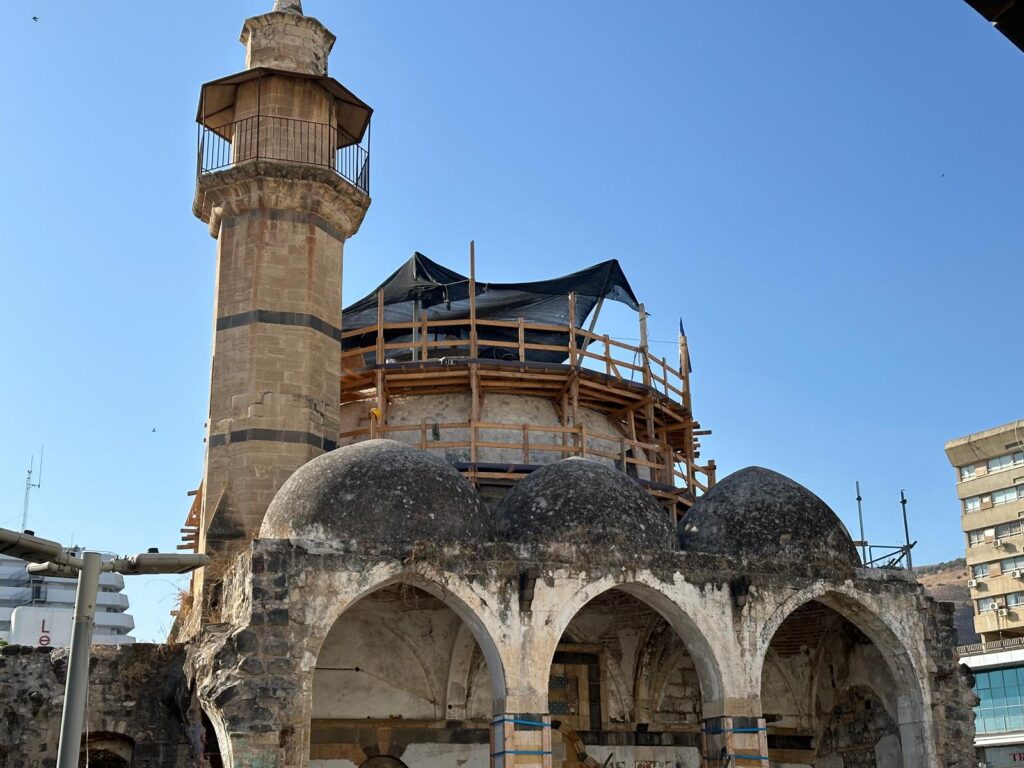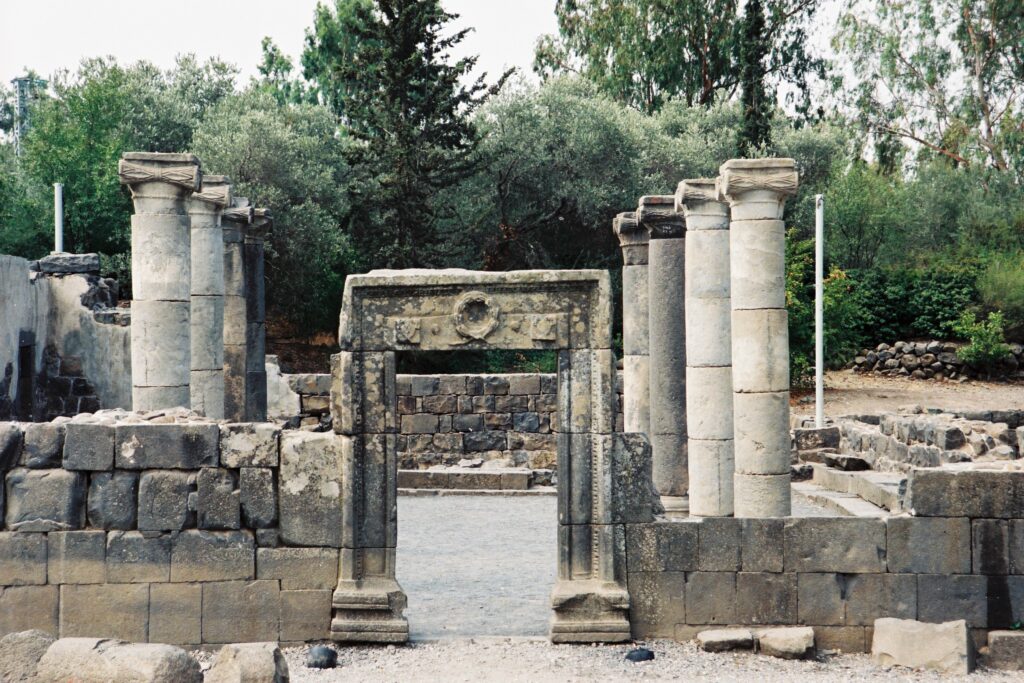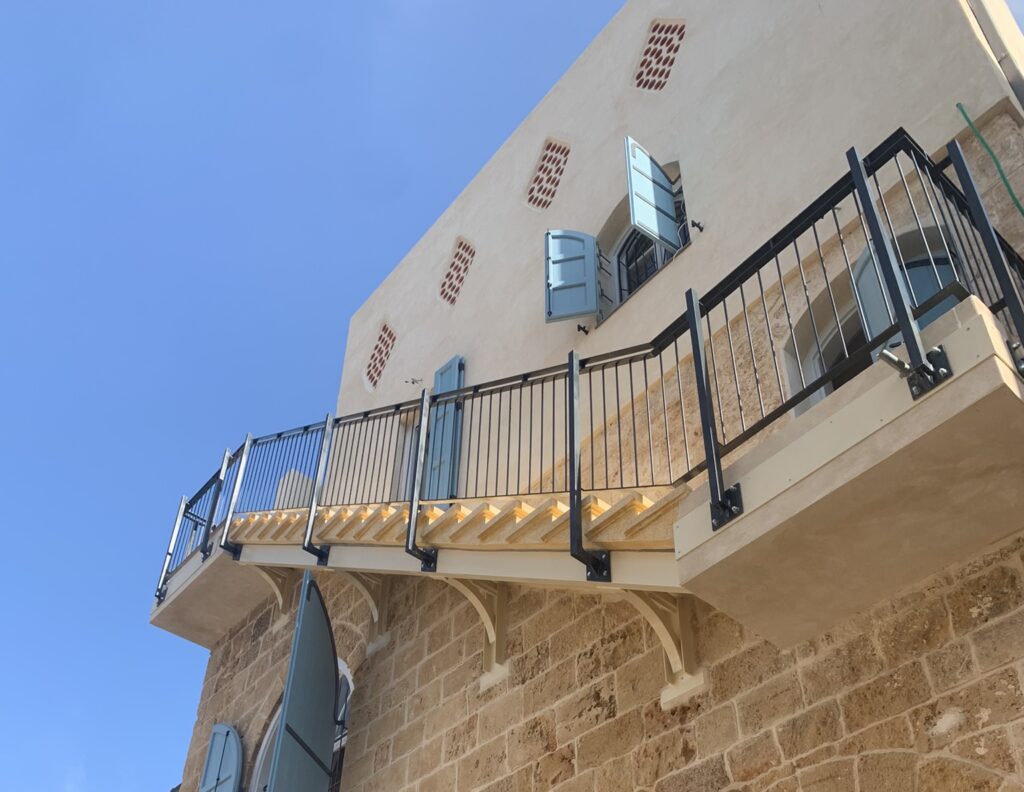Historical Background
The minaret of the Tower of David is an integral part of the historic citadel of Jerusalem, reflecting multiple layers of history. During the Ottoman period, the building served as a mosque for soldiers stationed in the military barracks. The structure contains architectural remnants from the Second Temple period, the Hellenistic and Herodian eras, as well as segments of walls from the First Temple period.
Following a historic earthquake, the upper part of the minaret collapsed and was later restored. During the British Mandate, additional changes were made to the structure, including replacing the original rounded dome with a pointed one. Today, the minaret serves as a panoramic viewing platform for visitors to the Tower of David Museum.
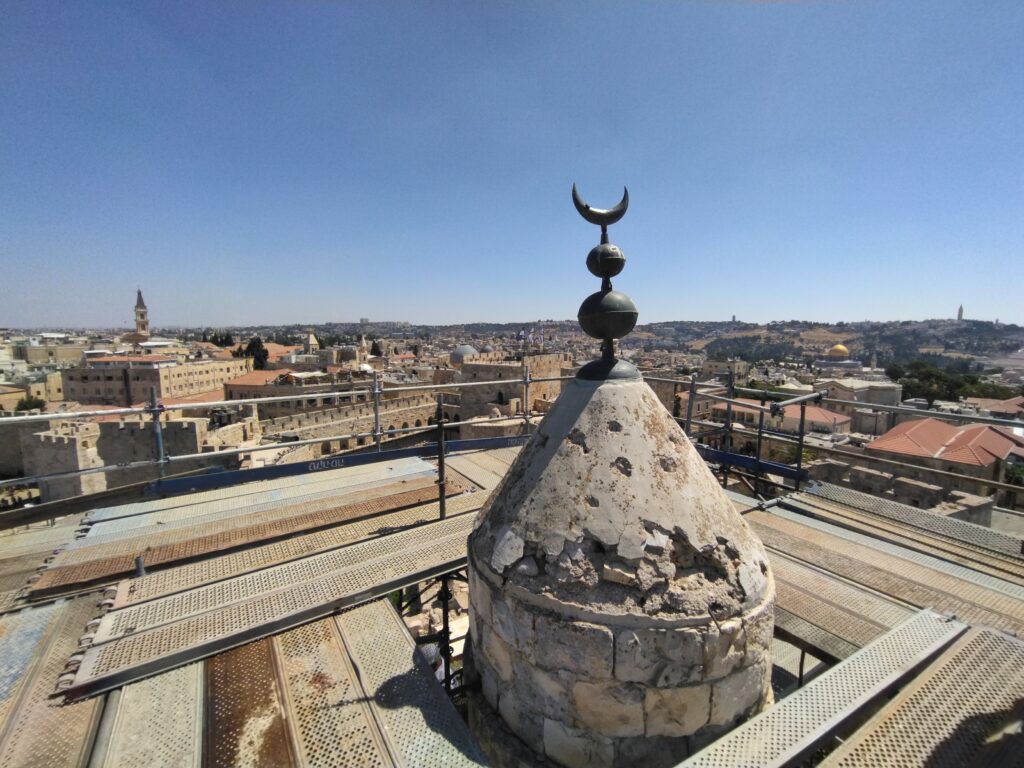
Condition Prior to Conservation
Before the historic building conservation planning began, the structure was in an alarming physical state:
- Deep and widespread cracks in the walls.
- Severely weathered stonework.
- Missing stones in various sections.
- Serious structural issues at the minaret base.
- The top section was in the worst condition, with a risk of stone fragments falling—this area was therefore closed to visitors.
Key Challenges
Restoring a minaret above an existing structure: The minaret stands on top of a large stone building that remained in use throughout the works. The primary challenge was carrying out the intervention at considerable height with limited access to cranes or lifting equipment.
Corroded iron clamps: Iron elements used to connect the original stones had rusted and expanded up to seven times their original volume, causing internal disintegration of the stones.
Projecting stones (corbels): Large, outward-jutting stones couldn’t be replaced due to engineering complexity and their importance in preserving the historical stonework’s design.
Structural cracks: Several deep cracks extended vertically from top to base.

Engineering Solutions
We started by working with experts from the University of Padua, Italy, who carried out professional structural monitoring. This monitoring enabled a precise understanding of crack behavior—confirming that they opened and closed in response to temperature and humidity changes. We concluded that the structure was stable and not at immediate risk of collapse, allowing for a more tailored engineering design.
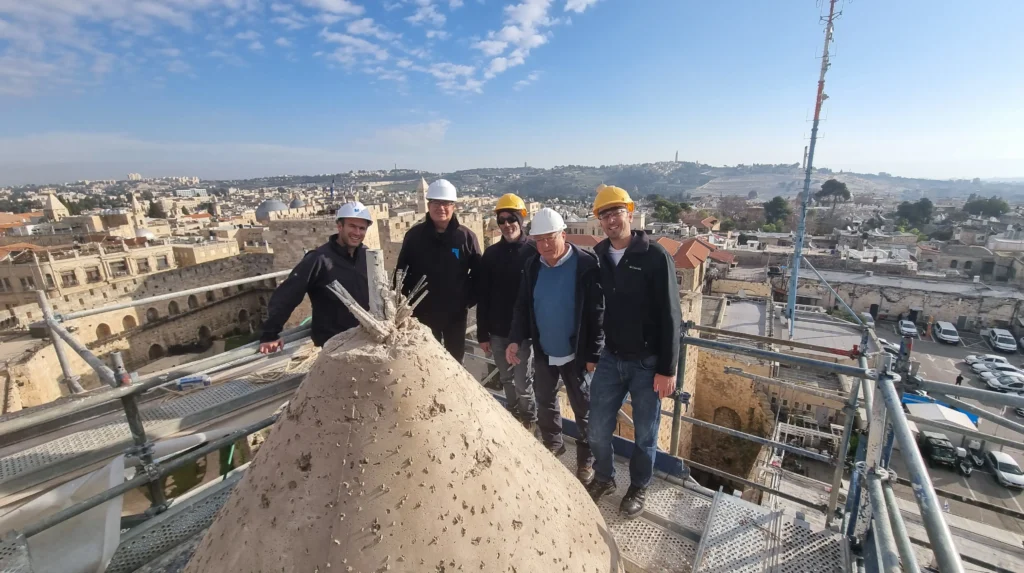

Development of a unique reinforcement method using basalt fibers: This innovative solution replaced the original iron, which had caused damage over the years. The basalt fibers—long and flexible, similar in behavior to fiberglass—are corrosion-resistant, lime-compatible, and don’t risk damaging the stone.
The basalt rock was processed into long fibers and woven into flexible mesh. These were applied in rope form after precision drilling into the stones. The drilled cavities were filled with traditional lime-based construction techniques, ensuring material compatibility and reversibility.
To stabilize projecting stones, we installed a tension rod with a frontal plate, inserted deep into the stone via a concealed borehole. Tightening the rod clamped the stone securely against the wall, preserving the original material in place.
Throughout the project, we used only traditional and historically compatible materials to safeguard the authenticity of the stone masonry. All work followed minimal intervention principles using advanced engineering solutions.
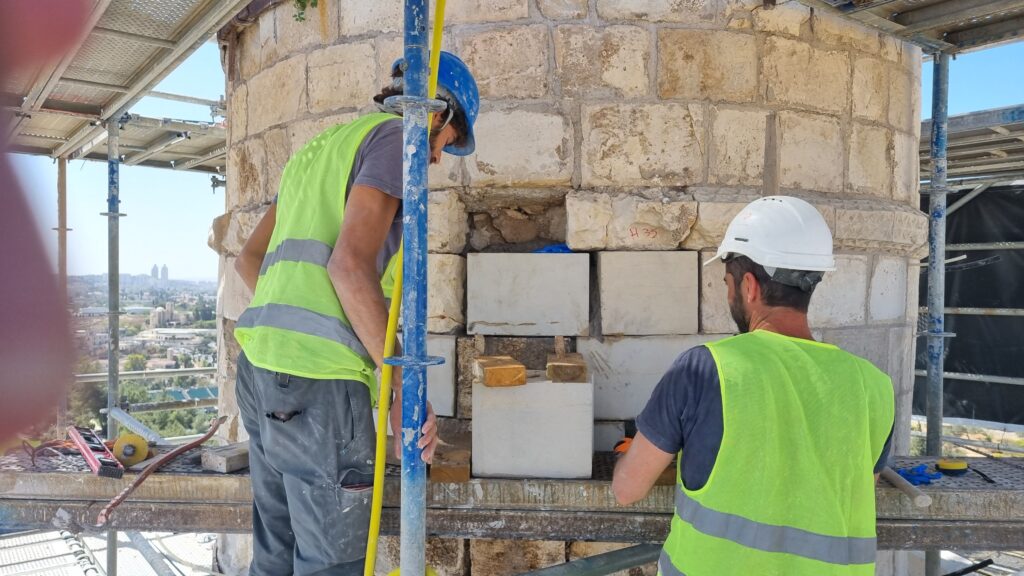
In Partnership With
Client: Tower of David Museum
Research and Supervision: Yossi Vaknin, Israel Antiquities Authority – carried out a comprehensive historical study and supervised fieldwork
Architects, Conservators, and Site Supervisors: Israel Preservation Directorate
Structural Monitoring: Experts from the University of Padua, Italy (led by Prof. Claudio Modena)
Conservation Engineering: Shefer Ronen Engineers – Yaakov Shefer, Aharon Levy
